It’s the middle of winter, and your throat is sore, your nose is congested, and you feel like you might die if you don’t get some relief soon. What can you do? You could go out and buy a humidifier! Humidifiers help add moisture to the air, which can help relieve some of the symptoms of a cold or the flu. But what about those filters that everyone always talks about? Do you need to buy one of those, too? This article will discuss the truth about using a humidifier without a filter.
What is a filterless humidifier?
A filterless humidifier is a type of humidifier that does not require a filter. These humidifiers use ultrasonic technology to emit a fine mist into the air, and they do not have any exposed heating elements.
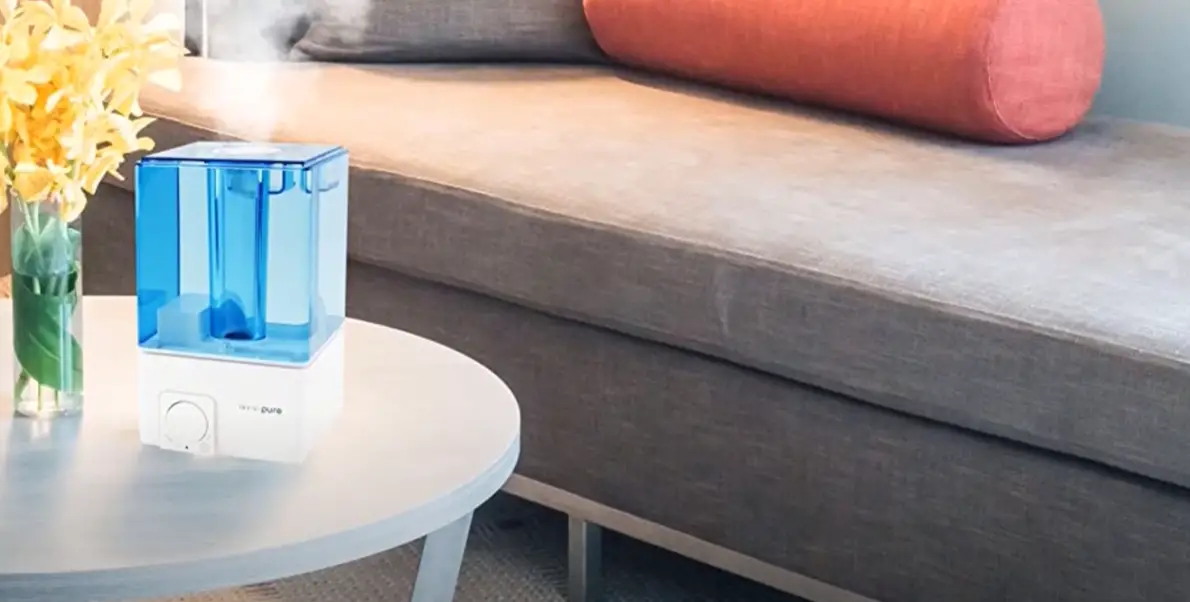
Filterless humidifiers work by using ultrasonic vibrations to create a fine mist of water droplets. These droplets are then emitted into the air, where they can help to increase the humidity levels. Yes, filterless humidifiers are safe for most people to use. However, it is important to make sure that you clean the unit regularly, as it can become a breeding ground for mold and bacteria if it is not cleaned properly.
These devices are produced in different styles, with some looking like traditional humidifiers and others resembling diffusers. Some units even come with built-in aromatherapy features, so you can enjoy the benefits of essential oils while you humidify your space [1].
How does a filter-free humidifier work?
A filter-free humidifier is a type of humidifier that does not require the use of a filter. These humidifiers use a wick to absorb water from the reservoir and release it into the air. The wick filters the water as it absorbs it, so there is no need for an additional filter.
Most filter-free humidifiers use ultrasonic technology. This technology was invented in the 1960s and is still used today in many humidifiers. Ultrasonic humidifiers use a piezoelectric transducer to create vibrations in the water. These vibrations create a mist that is released into the air. Thus, filter-free humidifiers do not use a filter to remove impurities from the water.
Advantages and Disadvantages of using a humidifier without a filter
As you know, a humidifier is a device that increases the humidity in a room. There are many types of humidifiers, but the most common type is the central humidifier, which is built into your furnace or air conditioner.
A central humidifier has two main parts: a water reservoir and a wick. The wick absorbs water from the reservoir and the humidifier blows air over the wet wick, adding moisture to the air. There are several advantages to using a humidifier without a filter. One advantage is that it requires less maintenance than a humidifier with a filter. A second advantage is that it costs less to operate because you don’t have to replace filters regularly. And a third advantage is that it humidifies your home more evenly because the air is not obstructed by a filter.
There are also some disadvantages to using a humidifier without a filter. One disadvantage is that it can release minerals into the air, which can cause problems for people with allergies or respiratory conditions. Another disadvantage is that it can be a breeding ground for bacteria and mold if it is not cleaned regularly.
And a third disadvantage is that it can be noisy when it is running.
How to Operate a Humidifier Without a Filter Properly?
Humidifiers are a great way to add moisture to the air, but did you know that you can use them without a filter? That’s right – some humidifiers don’t require a filter at all! But before you ditch those filters altogether, there are a few things you should know about using a humidifier without a filter. First and foremost, it’s important to find a humidifier that is specifically designed to be used without a filter. Not all humidifiers are created equal, and using the wrong type of humidifier without a filter can do more harm than good.
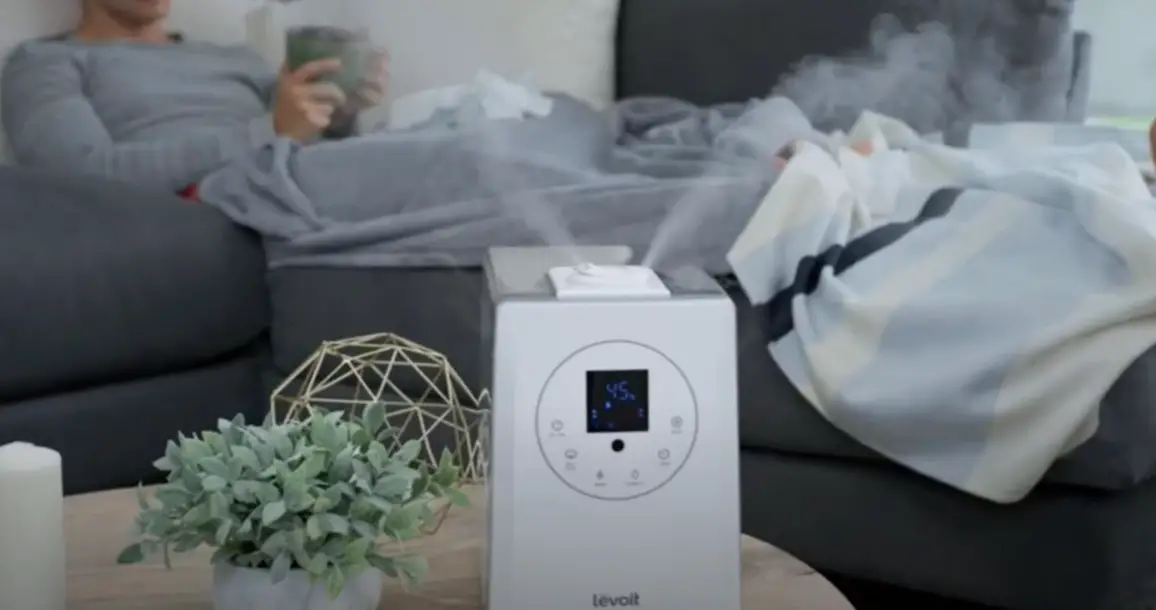
Once you’ve found the right humidifier, it’s important to follow the manufacturer’s instructions on how to properly operate the humidifier without a filter. This will ensure that your humidifier is working properly and isn’t causing any problems in your home. There are some steps you can take to help keep your humidifier running smoothly without a filter, such as:
- Use distilled water instead of tap water. This will help to prevent any build-up of minerals in the humidifier.
- Empty and clean the humidifier regularly. This will help to prevent the growth of mold and mildew.
- Keep the humidifier away from any drafty areas. This will help to prevent the escape of moisture into the air.
- Replace the humidifier’s wick regularly. This will help to ensure that the humidifier is working properly.
- Choose a humidifier with an automatic shut-off feature. This will help to prevent the humidifier from over-humidifying your home.
Following these steps will help you to use your humidifier without a filter safely and effectively. So, if you’re looking for a way to add moisture to the air without using a filter, then a humidifier may be the perfect solution for you [3]!
Is It Safe to Run a Humidifier Without a Filter?
You might be wondering if you can get away with running your humidifier without a filter. After all, it’s just water vapor, right? Well, unfortunately, it’s not that simple. While humidifiers do emit clean water vapor, they also produce minerals from the water that can build up on surfaces in your home. Over time, these mineral deposits can cause serious problems for your humidifier, including decreased performance and efficiency.
Furthermore, without a filter, your humidifier is much more likely to harbor bacteria and other harmful microorganisms. These contaminants can be released into the air along with water vapor, leading to respiratory problems for you and your family. For these reasons, it’s always best to use a humidifier with a filter.
However, you can also use a humidifier without a filter if you take some precautions that are described above.
How to Clean a Humidifier Without a Filter?
Cleaning a humidifier without a filter is not as difficult as it may seem. There are a few methods that can be used to clean the inside of the humidifier and keep it functioning properly. The most important thing to remember when cleaning a humidifier without a filter is to never use bleach or any other harsh chemicals. These chemicals can damage the components of the humidifier and lead to costly repairs. One of the easiest ways to clean a humidifier without a filter is to simply rinse it out with warm water.
Be sure to remove any standing water from the unit before rinsing it out. It is also important to unplug the humidifier before beginning the cleaning process. Once the unit has been unplugged, remove the cover and any other removable parts. These parts can usually be washed in the sink with warm, soapy water. Rinse all of the parts thoroughly before putting them back in the humidifier.
The next step is to fill the humidifier with a mixture of one part vinegar to two parts water. Allow the mixture to sit in the unit for about an hour before draining it out. Once the mixture has been drained, rinse the humidifier out again with warm water. Be sure to remove any standing water from the unit before putting the cover back on. It is important to clean a humidifier without a filter regularly to prevent the build-up of bacteria and mold.
How to Clean a Humidifier Filter, if you use one?

Step One: Remove Dust From The Exhaust Ports
The first step is to make sure that the exhaust ports are free from any dust or debris. To do this, you will need to unplug the humidifier and then remove the filter housing. Once the housing is removed, you can use a soft brush to clean off any debris that may be blocking the ports. if you won’t do this, the humidifier will be working less efficiently.
Step Two: Cleaning The Filter
You will need to remove the filter and then rinse it under warm water. Make sure that you do not use hot water, as this can damage the filter. Once you have rinsed the filter, you will need to let it air dry completely before putting it back into the humidifier.
Step Three: Sanitize The Filter
To sanitize the filter, you will need to soak it in a solution of equal parts vinegar and water for at least 30 minutes. After soaking, rinse the filter off with clean water and let it air dry completely before putting it back into the humidifier. You can also use a filter sanitizer solution to sanitize the filter.
Step Four: Replace The Filter
Once you have cleaned and sanitized the filter, you will need to put it back into the humidifier. Make sure that you replace the filter every two to three months to ensure that your humidifier is working properly.
What if you don’t change the filter or clean it?
The humidifiers with a filter need to have the filter changed or cleaned regularly, typically every one to three months. Depending on the model of the humidifier, the frequency may be different. Not changing the filter or cleaning it can result in poor mist quality and decreased performance of the humidifier. Additionally, it can lead to mold or mildew growth inside the humidifier tank which can then be released into the air along with the mist.

While you may not notice any immediate adverse effects from using your humidifier without a filter, it’s not something that it wouldn’t be recommended to do regularly. Not only can it decrease the performance of your humidifier, but it can also lead to potentially harmful health consequences if mold or mildew begins to grow inside the humidifier tank. If you decide to use your humidifier without a filter, be sure to clean it regularly and keep an eye out for any signs of mineral deposits or mold growth [4].
Comparison of Using a Humidifier With or Without a Filter
Deciding whether to use a humidifier with or without a filter is an important consideration for maintaining indoor air quality and the effectiveness of the device. Below is a comparison of using humidifiers with and without filters, helping you make an informed choice.
| Aspect | Using Humidifier With Filter | Using Humidifier Without Filter | Advantages | Considerations |
|---|---|---|---|---|
| Humidity Control | Provides more precise humidity control by trapping minerals and impurities from the water. | May offer less precise humidity control, as it doesn’t remove minerals and impurities from the water. | Prevents over-humidification and maintains consistent humidity levels for improved comfort. | Regular filter replacement and cleaning are necessary to maintain effectiveness. |
| Air Quality | Filters airborne particles, allergens, and impurities, improving indoor air quality. | May not filter airborne particles and allergens, potentially affecting air quality. | Reduces allergen exposure and ensures cleaner air, benefiting those with respiratory issues. | Requires using filtered or distilled water to prevent mineral buildup in the unit. |
| Health and Comfort | Creates a healthier and more comfortable indoor environment by delivering clean, moist air. | Still provides humidity, but may not maintain the same level of cleanliness in the air it produces. | Reduces allergy symptoms, dry skin, and respiratory discomfort, promoting better well-being. | Regular cleaning and maintenance are crucial to avoid mold or bacterial growth in the unit. |
| Mineral Buildup | Prevents mineral deposits and white dust issues in the humidifier and the air it produces. | May result in mineral deposits and white dust issues, especially in areas with hard water. | Extends the lifespan of the humidifier and ensures clean mist output without mineral buildup. | Requires using filtered or distilled water to prevent mineral accumulation. |
| Maintenance | Requires regular filter replacement or cleaning, but this helps maintain the device’s efficiency. | Requires less filter-related maintenance, but may need more frequent cleaning to prevent issues. | Saves on filter replacement costs but may necessitate more cleaning efforts for mineral and mold prevention. | Choosing a filter or filterless humidifier depends on your maintenance preferences and local water quality. |
Explanation of the table:
- The table provides a comparison of using a humidifier with or without a filter, addressing aspects such as humidity control, air quality, health and comfort, mineral buildup, and maintenance.
- Each aspect is described, highlighting the advantages and considerations associated with these two options for using a humidifier.
FAQ
Is it better to have a humidifier with a filter or without one?
The answer to this question depends on your specific needs and preferences. If you are looking for a humidifier to use in a small room, such as a bedroom, then a filter may not be necessary. However, if you plan on using the humidifier in a larger space, or if you have allergies or asthma, then a filter may be beneficial.
Can you use a humidifier without a filter?
Yes, you can use a humidifier without a filter. However, it is important to clean the unit regularly to prevent the build-up of mold and mildew. Additionally, using distilled water in your humidifier will help to reduce the risk of bacteria growth.
Is a filter-free humidifier safe?
Yes, a filter-free humidifier is safe to use. However, as with any electrical appliance, it is important to follow the manufacturer’s instructions and take precautions to avoid injury.
Can you use a humidifier with tap water?
Yes, you can use a humidifier with tap water. However, it is important to clean the unit regularly to prevent the build-up of minerals and bacteria. Additionally, using distilled water in your humidifier will help to reduce the risk of mineral deposits and bacteria growth.
What can I use as a filter in my humidifier?
If you do not have a filter for your humidifier, you can use a clean, dry cloth to cover the opening of the unit. Additionally, you can use white vinegar or lemon juice to clean the unit regularly.
Can I use a furnace filter in my humidifier?
No, you should not use a furnace filter in your humidifier. Furnace filters are designed to trap large particles, such as dust and pollen. Using a furnace filter in your humidifier can clog the unit and reduce its efficiency.
Can you use a humidifier every night?
Yes, you can use a humidifier every night. It can help to improve your sleep quality and relieve congestion. Additionally, using a humidifier can help to prevent dry skin and static electricity.
Can you use a humidifier while pregnant?
Yes, you can use a humidifier while pregnant. It can help to relieve congestion and soothe dry skin. Additionally, using a humidifier can help to prevent static electricity.
How often should I clean my humidifier?
You should clean your humidifier every 1-2 weeks, or as needed. Additionally, you should descale the unit every 3-6 months to prevent mineral build-up.
Can I use a humidifier with essential oils?
Yes, you can use a humidifier with essential oils. However, it is important to use a water-based diffuser to avoid damaging the unit. It can allow you to enjoy the benefits of aromatherapy while using your humidifier. Additionally, you should only use a few drops of oil per 1-2 gallons of water to prevent clogging.
Will a humidifier work without a wick?
No, a humidifier will not work without a wick. The wick is responsible for absorbing water from the unit and releasing it into the air. Without a wick, the humidifier will not be able to produce moisture.
Can I use baking soda in my humidifier?
Yes, you can use baking soda in your humidifier. It can help to absorb odors and freshen the air. Using a baking soda solution can also help to clean the unit and remove mineral deposits.
How can I make my humidifier wick last longer?
You can make your humidifier last longer by using distilled water in the unit. Additionally, you should clean the unit regularly and replace the wick every 1-2 months.
What are the benefits of using a humidifier without a filter?
Using a humidifier without a filter can be beneficial as it reduces the ongoing cost of filter replacements. It also simplifies maintenance, making it a more convenient option for some users.
How can I maintain a filter-free humidifier for optimal performance?
To maintain a filter-free humidifier, regularly clean the water tank and other components to prevent mineral buildup. Use distilled water to minimize mineral deposits and ensure the device operates efficiently.
Are filter-free humidifiers suitable for hard water areas?
Filter-free humidifiers can be used in hard water areas, but you should be prepared to clean them more frequently due to mineral deposits. Using distilled water or a water demineralization cartridge can help reduce this issue.
Can I use filtered water in a filter-free humidifier for better results?
Using filtered water in a filter-free humidifier can help reduce mineral buildup, leading to improved performance and less frequent cleaning. However, it may not eliminate the need for maintenance entirely.
Do filter-free humidifiers require less maintenance compared to those with filters?
Filter-free humidifiers generally require less maintenance than their filtered counterparts, but they still need regular cleaning to prevent mineral buildup and maintain optimal functionality.
Are there any health concerns associated with using a filter-free humidifier?
There are no specific health concerns associated with using a filter-free humidifier as long as it is properly maintained. Regular cleaning and using clean water are essential to ensure air quality remains healthy.
Can a filter-free humidifier effectively raise indoor humidity levels?
Filter-free humidifiers can effectively raise indoor humidity levels, but they may require more attention to keep them working efficiently. Using distilled water and regular cleaning can help maintain their effectiveness.
Are filter-free humidifiers more environmentally friendly than filter-based models?
Filter-free humidifiers can be considered more environmentally friendly because they don’t require disposable filters. However, the environmental impact also depends on the energy efficiency of the specific model and how it is used.
Can I use a filter-free humidifier in a baby’s nursery or child’s room?
Filter-free humidifiers can be used in a baby’s nursery or child’s room, but it’s important to ensure proper cleaning and maintenance to maintain air quality. Always follow the manufacturer’s recommendations for safe use.
What are the key considerations when choosing a filter-free humidifier?
When choosing a filter-free humidifier, consider factors such as the size of the room, the water quality in your area, and your willingness to perform regular maintenance. These factors will help you select the best option for your needs.
Useful Video: 6 Greatest Filterless Humidifiers — Perfect Air at No Extra Cost!
Conclusion
In general, it is not recommended to use a humidifier without a filter. While it may seem like a more convenient option, doing so can lead to several problems. Without a filter, the humidifier’s water reservoir can become a breeding ground for bacteria and other microorganisms. These contaminants can then be released into the air, leading to respiratory infections or other health problems. In addition, using a humidifier without a filter can also cause white dust to build up on surfaces in your home. However, if you do choose to use a humidifier without a filter, be sure to clean it regularly and use distilled water to help reduce the risk of problems. Moreover, some models are filter-free. But be aware that they may have other issues, so do your research before making a purchase.
References
- https://www.goodairgeeks.com/filter-free-humidifier-vs-filter/
- https://hvacpik.com/can-you-use-a-humidifier-without-filter/
- https://homeairadvisor.com/how-to-use-a-humidifier-without-a-filter/
- https://getcanopy.co/blogs/news/when-should-you-change-your-humidifier-filter





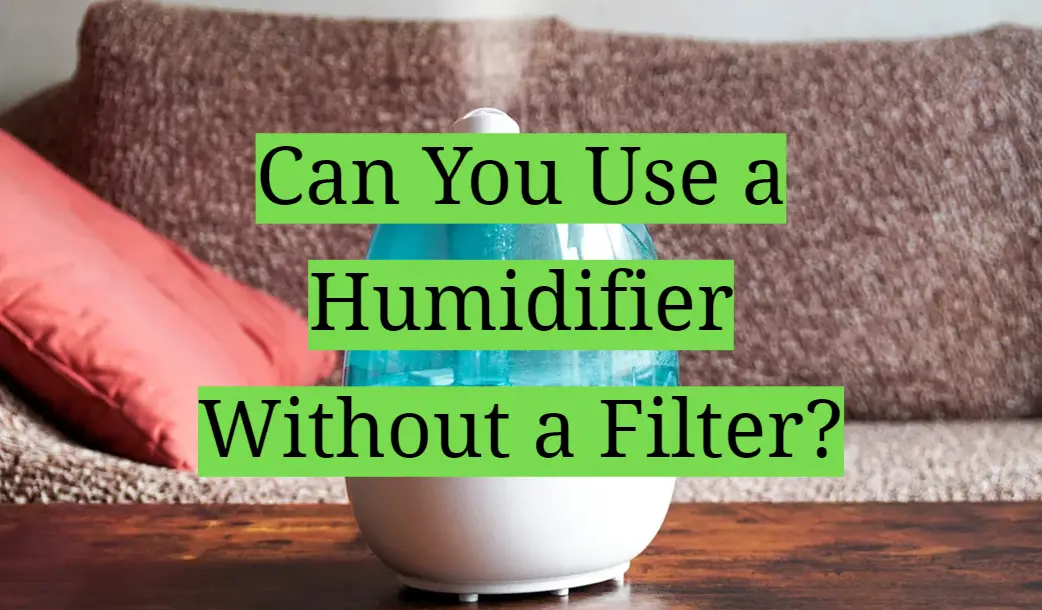




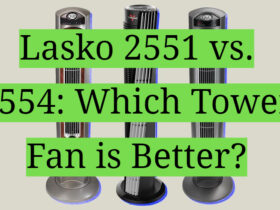

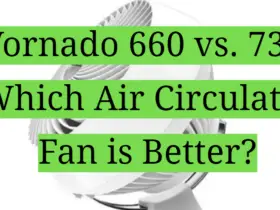
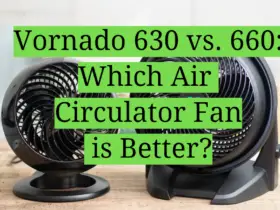
Leave a Reply